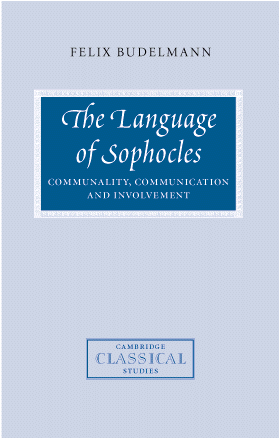Book contents
2 - Characters: a shared perspective
Published online by Cambridge University Press: 15 August 2009
Summary
INTRODUCTION
By being unpredictable, I have argued at the end of the previous chapter, many Sophoclean sentences inspire trust and appear to point at a world beyond their own words. In the rest of this book I want to explore this world in more detail. I will begin in this chapter with its most visible aspect: the characters. They are most obviously part of the world that spectators get to share, appearing, as they do, on stage for all to see. Much can be said, and has been said, about the ways in which spectators can engage with the things they see the characters do. What I am interested in here, however, is not so much what they do as what they say. Throughout this book I trace the ways in which Sophoclean language communicates and the ways in which it gets many different spectators involved in a play. In this particular chapter, therefore, I will ask how the ways in which Sophoclean language communicates affect the characters and their interaction with the spectators. How can spectators engage with the way the characters speak? How do the characters fit into the shared world that I talked about at the end of chapter 1? What scope is there for what I call communality among the different?
Discussion of characters in tragedy tends to focus on the singular ‘character’ and the ‘presentation’ or ‘portrayal’ of ‘character’.
- Type
- Chapter
- Information
- The Language of SophoclesCommunality, Communication and Involvement, pp. 61 - 91Publisher: Cambridge University PressPrint publication year: 1999

